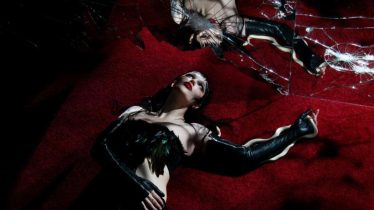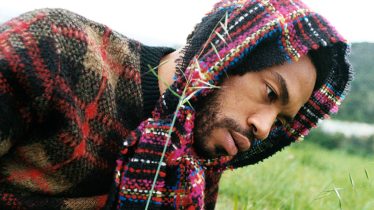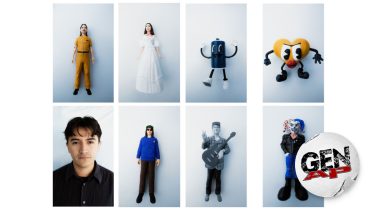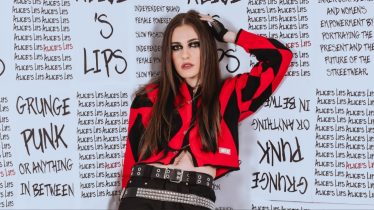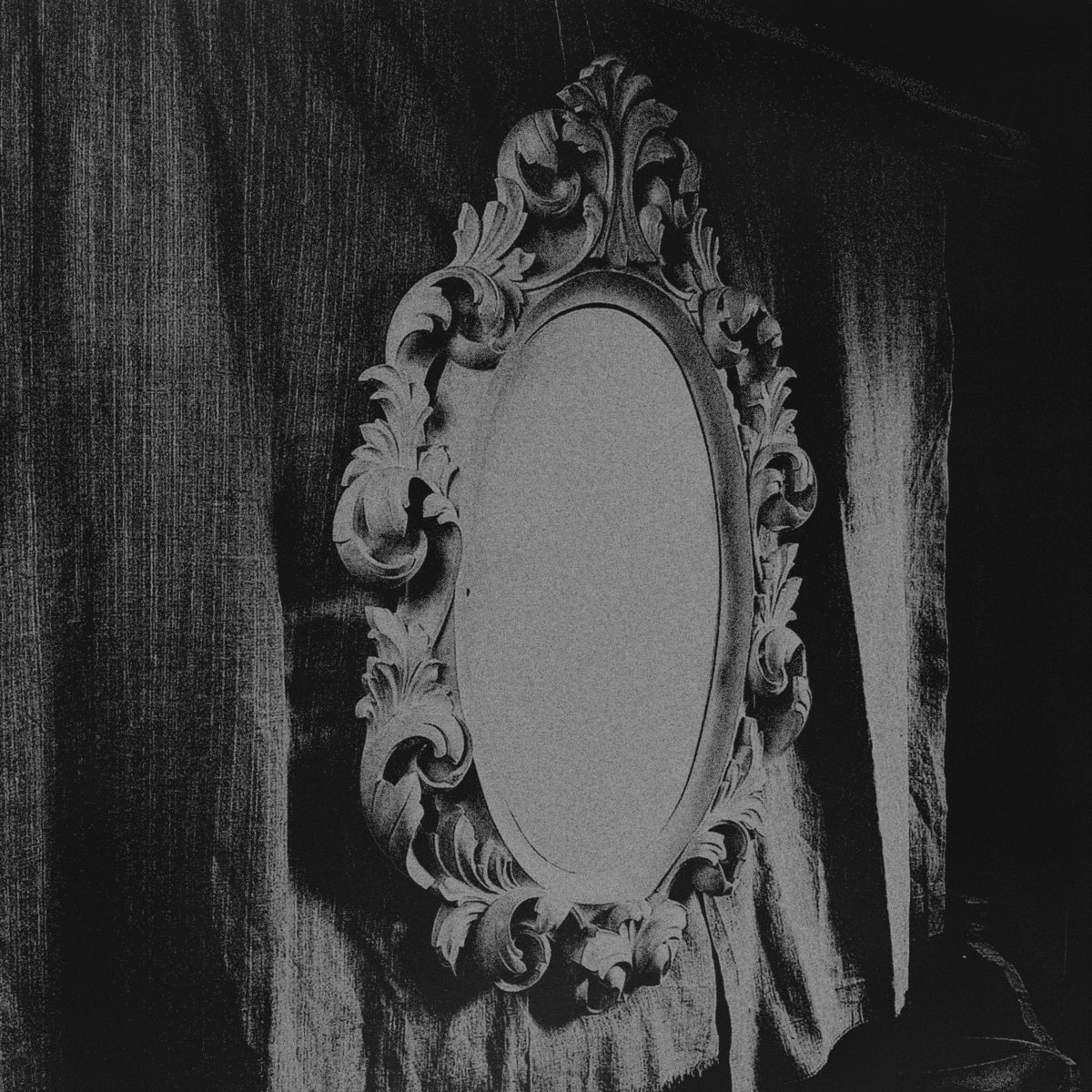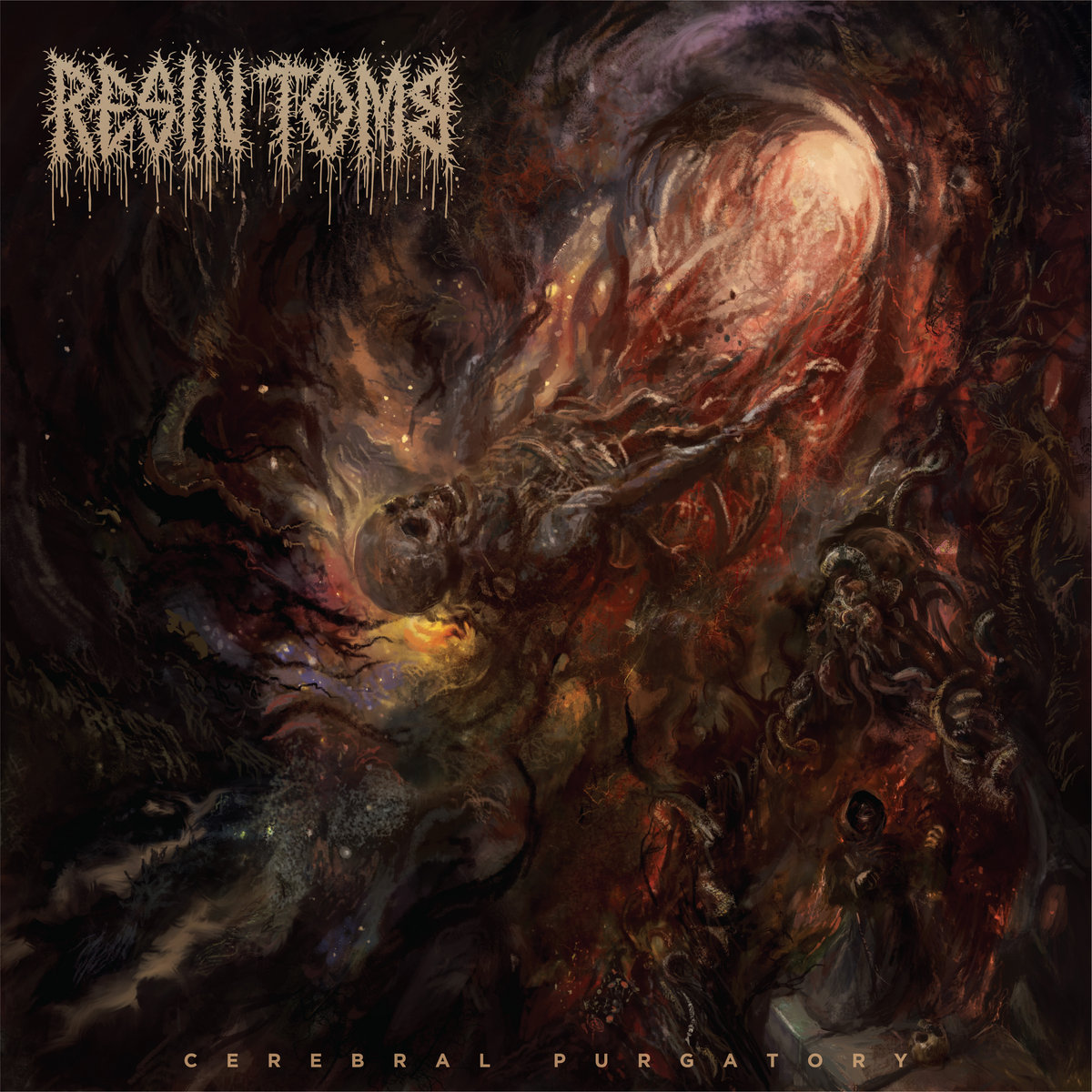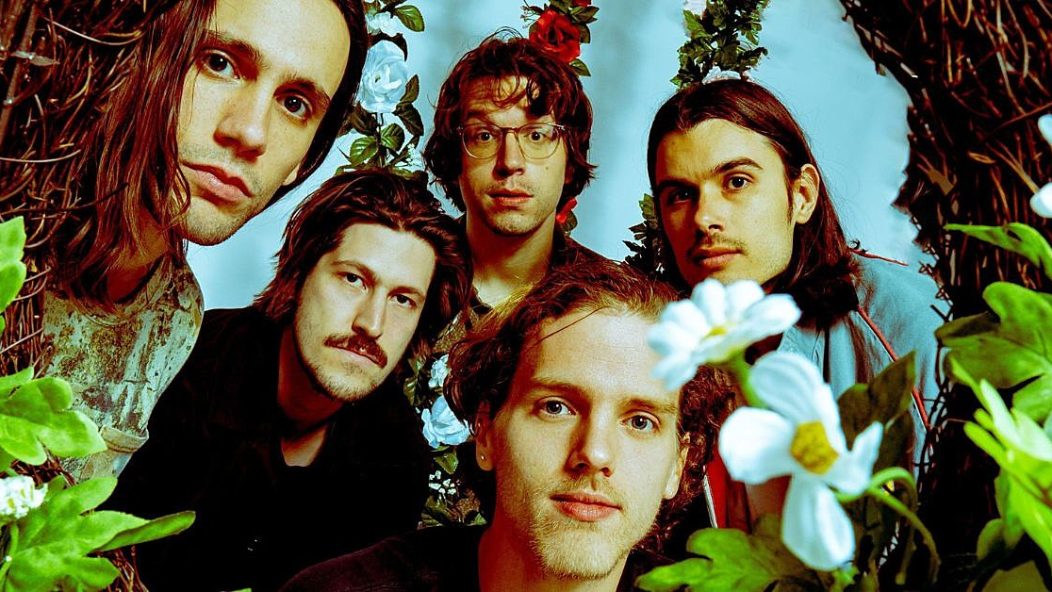
Post Animal return to their roots in more ways than one on 'Love Gibberish'—interview
LIKE A VINTAGE POLAROID, there exists a portrait of Post Animal’s latest record that rings clear in guitarist Jake Hirshland’s mind.
“My image of this record is walking from the house that we were all staying in at the farm to the barn that we were playing in, in the middle of the night, and hearing [the songs] reverberating through the open space of the natural world,” he says from the group’s touring van, parked somewhere in Alabama, surrounded by his four bandmates.
Read more: Post Animal announce new album, share lead single “Puppy Dog”—listen
Over the course of 10 days in August 2021, Post Animal reveled in the solitude and splendor of rural Wisconsin. There, on Hirshland’s family farm, the group unloaded a pile of demos and became entwined with the very place where they named the band. During the day, they could spot massive hills spilling out into the horizon. At night, when the members looked up at the sky, they could point out constellations. The nearest town was merely a skeleton compared to their bustling homeland of Chicago.
Still, there were reminders that they weren’t truly alone. The band often played through the night, and the sound reverberated for miles. Curious strangers from across the valley would hop into their vehicles to find the source of the magic and drop in at random times.
“They’d come and have a Coors Light and listen to us,” Hirshland says.
“Literally pull up, get out of the car and just sit and watch us play. It happened two or three times,” guitarist Matt Williams adds.
That pastoral pilgrimage is the lifeblood of Love Gibberish. Right from the jump, it’s as if you’ve been transported to 1971, with the band embracing classic-rock influences in a way that feels both stylish and compelling. As the record progresses, it becomes easier to envision the members of Post Animal standing in the barn noodling around, testing themselves, pushing toward the outer limits.
“Maybe I’m sounding a little cheesy, but it was very rock ’n’ roll,” drummer Wesley Toledo offers.
Read more: Apple discontinues the iPod after a 20-year run
His statement isn’t cliche by any stretch. Plenty of legacy acts have decamped to wide-open pastures in search of refuge in its desolate quiet, free of distractions and outside influence affecting the creative process. Visions of psychedelic pioneers Hawkwind ingesting LSD at Rockfield Studios — a dairy farm turned recording space in Wales — flicker to mind, and it’s clear that Post Animal are following a long tradition set by the very artists they’re carrying the torch for.
Indebted to Pink Floyd, Black Sabbath and the Beatles, Post Animal have made their name by producing gritty, swirling psych-pop. It’s the type of music often compared to bands from Australia’s sweeping psychedelic scene, who put the genre back on the map in the 2010s.
“I think Tame Impala did it in a certain way that felt attainable,” guitarist Javier Reyes says. “It also hit me at an age where I was pivoting to that style of music. Pond, King Gizzard, those Australian bands. I feel like they were very influential — that style of singing, a lot of reverb and the vocal melodies aren’t too busy. Same with guitar parts. [They have] more sustained and interesting tones.”
Read more: PinkPantheress went from running fan pages as a teen to becoming the subject of them
Whereas 2018 debut album When I Think Of You In A Castle committed to proggy psych-pop arrangements reminiscent of the Australian scene, its 2020 follow-up Forward Motion Godyssey employed complexity and pomp. Fittingly, Love Gibberish finds the band yet again making bold moves. The group set out to refine their approach, Toledo says, finding ways to stumble upon the next logical progression of their band. The five-piece were also jamming “big arena-style radio rock” from the ’70s and ’80s, which becomes abundantly clear when you reach “No More Sports.” Propelled by flashy guitar solos, spacey synths and enough playful bravado to make the late Eddie Van Halen proud, the song is an apt demonstration of their desire to blend retro influences with modern pop sensibility.
Others split the difference between Castle and Forward Motion. “Puppy Dog,” for one, adopts the vocal hooks of the former and concludes with the extravagance of the latter. Meanwhile, “When You Walk Towards Me” boasts a type of supernatural cool that makes it one of the record’s most captivating cuts. A slow-boiling introduction reveals a love song with a pulse, giving way to an irresistible electronic passage toward its end.
“I feel like with that one, it’s a good example of us doing a little bit more distilling of our ideas in the making of the songs,” Hirshland enthuses. “We had this demo from Matt that was this dark-pop, gothy-sounding ’80s thing. We really took the time to make sure we found the most cutting synthesizers and really went for the ambiance and stuck with the tones to try and create a little universe.”
Read more: 20 concert films that capture the best of live music, from NIN to Paramore
“Megaphone,” by comparison, will catch you off guard within seconds. Featuring heavily affected vocals, it’s a song that puts their love for modern pop music front and center. “[The record] really going for our attempts at some challenging vocal melodies and having them be really present, as opposed to washed out and buried among the music, was a new endeavor, a new challenge,” Williams says.
Those types of experimental impulses are the signature of Dalton Allison, the quiet genius sitting in the back seat of the van, who mixed and engineered the record at Palisade Studios in Chicago. Having previously completed albums and EPs through DIY setups, Love Gibberish marks the first time the band worked in a proper recording studio. This is where the city’s influence starts to worm its way onto the record. It makes its presence known through the chic electronic touches and crisp sound, among other aspects. Being in a studio also afforded Post Animal the opportunity to make the songs sound more modern, no matter how long it took. For Toledo, some of the harder tracks to learn came easier (“Infinite Zone”), whereas it was more difficult to breathe character into simpler drum beats.
“Is ‘Love Is Trouble’ the one that you came back the next morning and did it again?” Reyes asks from the back seat.
“Yeah, you’re right,” Toledo answers gratefully. “I forgot about that. That one I had to come back to after the first day because I didn’t feel good about what I tracked, you know? I just really wanted to nail it.”
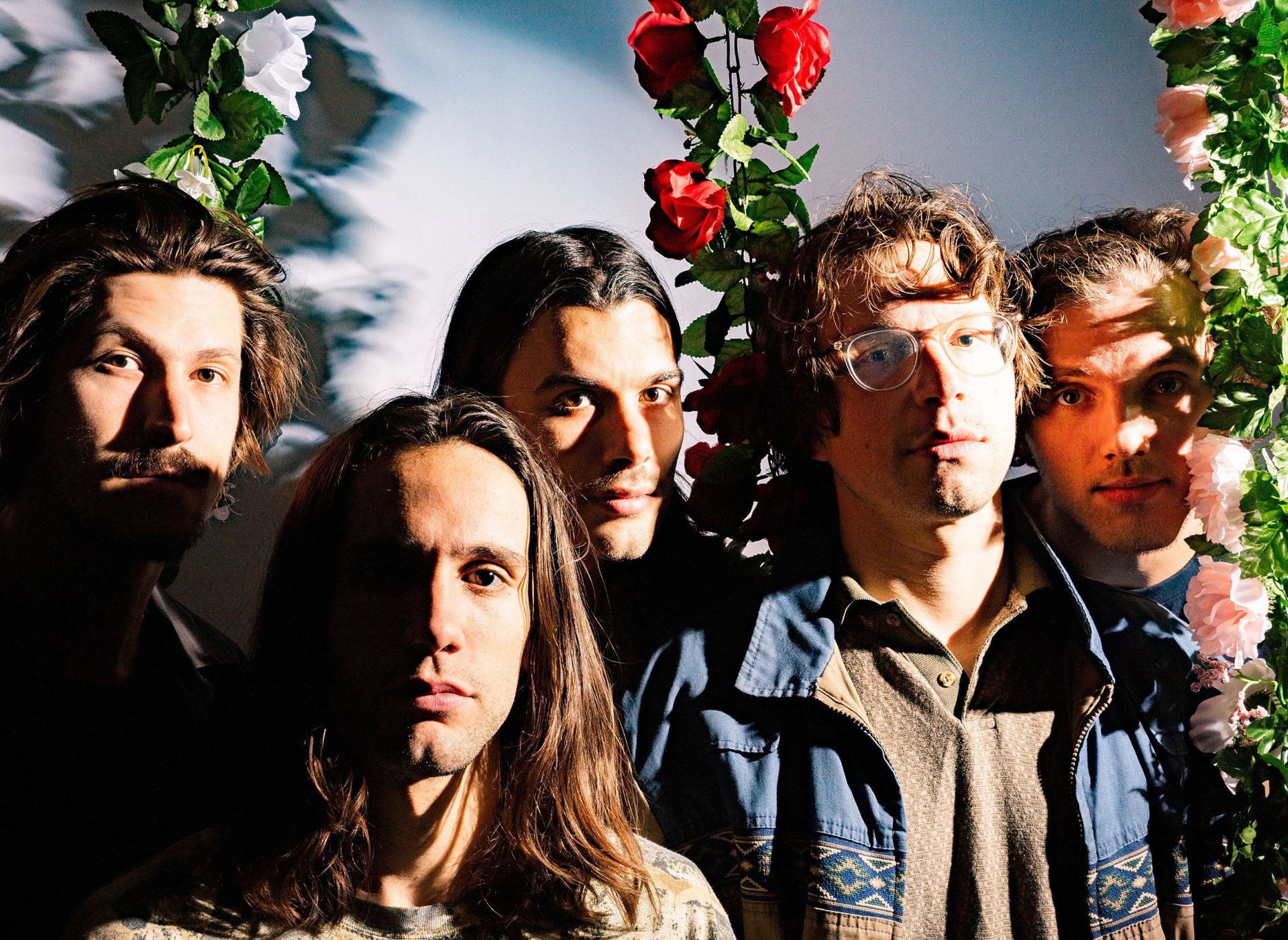
“It’s how we used to be,” Allison says. “There are a lot of things that go on in the music industry that really don’t have that much to do with art, and I think we are trying to reclaim some of our own creative process. We’re lucky that we’re able to do it independently. It makes a lot of sense, especially as a band nowadays, to try to be as autonomous as possible.”
The rest of Post Animal back him up with nods and are quick to clarify that their decision to leave Polyvinyl had nothing to do with shady practices. If anything, it’s because the band saw a chance to see what they could do and focus more on the music. They’re also self-aware enough to recognize that by going independent, they aren’t “doing anything particularly novel,” Hirshland says. But it’s yet another opportunity to push themselves to the brink of the unknown.
“I think the industry is changing, too,” Toledo adds. “No one knows how to make it work right now, so we might as well experiment with self-releasing our album because we’ve always done it ourselves.”
Read more: Eyedress channels ‘Resident Evil’ in new “HOUSE OF CARDS” video—watch
He’s right: Artists are increasingly feeling less beholden to record labels. More than ever, they’re taking matters into their own hands, whether that’s uploading tracks online from their bedrooms or starting their own labels. Take, for example, Kikagaku Moyo’s Guruguru Brain, headquartered in Amsterdam, or Causa Sui’s El Paraiso Records in Denmark. Both serve as psychedelic hubs for those respective regions and pull a whole other side of the world into focus for Western audiences.
Which touches on a valid question. Do Post Animal still view themselves as a psychedelic band?
“Even though I don’t think we always are that psychedelic these days in the way that it’s often thought about, I do think we are psychedelic in our genre-hopping and how we really mix a lot together in one album and find a way to bridge together tons of different genres in one body of work in a way that we feel is cohesive,” Hirshland proposes earnestly. “I feel like the Beatles are really a huge influence in doing that. They show what is possible in terms of…”
“Interdimensional range,” Williams chimes in, with a laugh.
Read more: 20 albums that paved the way for alternative as we know it
His point is sound. After all, it isn’t so much about sticking to the classic sounds of Haight-Ashbury than it is about where the music takes you — and what you glean from it. Plus, it doesn’t hurt that Post Animal are certainly a product of their influences. In another decade, you can imagine the band members soaking up the theatrics of a Yes show just as easily as you can picture them lazing in the grass at Woodstock.
Psychedelia is a broad spectrum that means different things depending on who you ask. Some may think of the Norman Whitfield era of the Temptations or Herbie Hancock’s Mwandishi years. Others may only be able to conjure images of Hendrix kissing his guitar before lighting it ablaze at Monterey Pop. However you define it, Post Animal have created their own vocabulary in the process.
This feature appeared in issue 406, available below.
